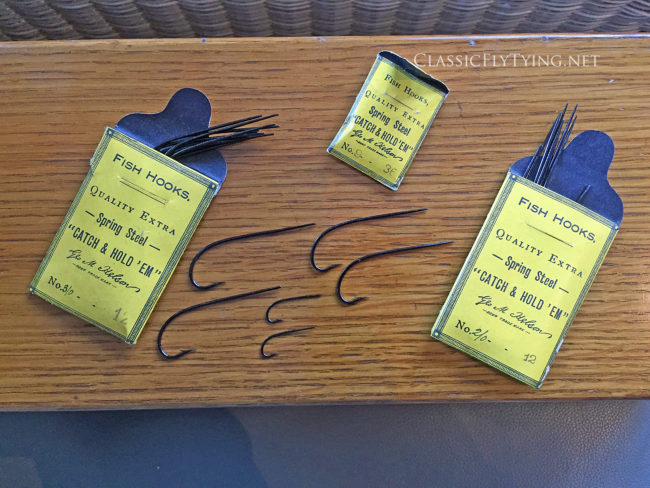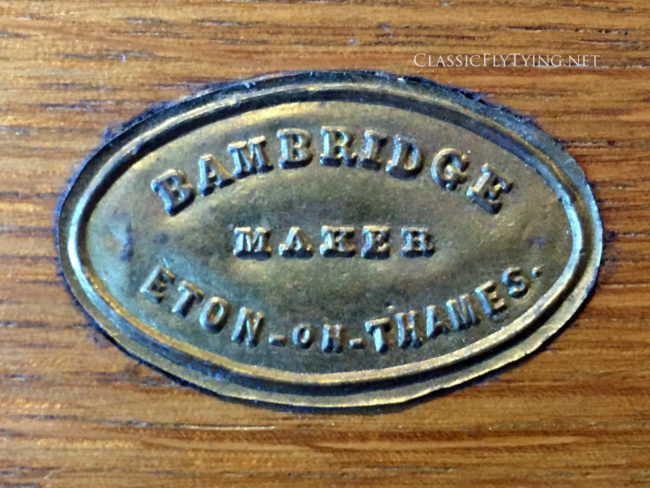By Robert Verkerk, 2018…
Kelson rose to fame through his work for the Badminton Library in 1885, and his articles for the Fishing Gazette in the years that followed. In 1890, he completed the Salmon Fly, which was published in 1895.
As Advertised in The Salmon Fly
At the highest point of his fame, just around the time he completed The Salmon Fly, George M. Kelson licensed his brand, the Kelson name, to a variety of products that he vouched for, and often used himself.
Kelson liked to promote his commercial items through his writing, and in the 1895, first edition of The Salmon Fly, we find an advertisement of a B.R. Bambridge product, called “the Kelson Cabinet”.
B.R. Bambridge was renowned tackle maker at the time, established in 1790, and kept shop well into the 1930’s.
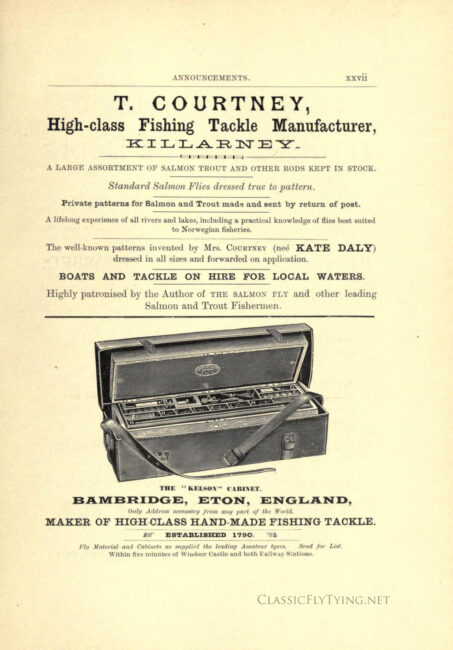
Not long ago, a friend of mine obtained one of these Kelson Cabinets from an auction, and allowed me to document it for this website.
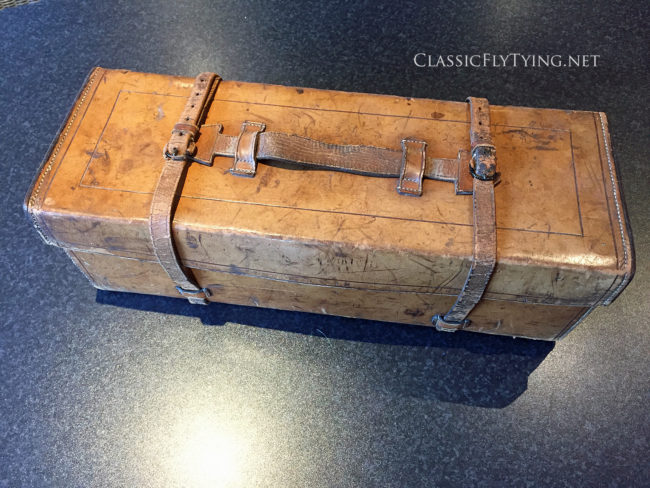
A Kelson Travel Kit
Evidently, George M. Kelson was involved with the marketing of this item, and very likely, also its design. As with the hooks that carried his name, he was a fond and proud user of his ‘own products’, which he considered and promoted as superior. Many of the items inside this kit provide a direct link to Kelson’s time and preferences. For example, there is a dubbing book which includes many of Kelson’s Standard Colours, including the Crimson Magenta Seal’s fur that was unique to him. When you add the handwriting, which is downright similar to Kelson’s hand, you’d make a hard case disproving authenticity of at least this particular item.
There are also several other scarce materials that Kelson made specific reference to – Golden Bird of Paradise – which GMK notes was incredibly expensive and is not specified by anyone else, Nankeen Night Heron, and Amgold. In addition, all materials have been prepared for use. It is the kind of anal retentiveness that Kelson was known for. He owned vast amounts of tying materials, and everything was organised to the tiniest detail.
Whilst it cannot be proved conclusively that this was Kelson’s personal box, the presence of unique, extremely expensive materials and extensive notes in his own hand at the very least point to their having a close association with the great man. Indeed, several items provide a reasonable possibility of a link to Kelson in terms of ownership and/or involvement, but the fact remains purely speculative. Even if the man was in fact the first and original owner of this wonderful item, there are too many other items that imply that the case has exchanged ownership at least a few times through the years, and each new owner has made the kit his own.
As such, we can only enjoy this collection and take its link to George Kelson as a bonus. Collected and used, it remains today in the exact state that we discovered it, and it is on display exclusively here, on ClassicFlyTying.net. A wonderfully legitimate item, rellevant in terms of its value as an accurate reference. A window into the past, gorgeous and glorious in its own right.
A Look Inside
After opening the leather case, wooden compartments can be removed, containing hooks and dozens of envelopes with hackles and herls. All of these contain mostly tiny Trout fly hackles, and the envelopes are mostly made of Glassine, though there are some parchment envelopes there as well, suggesting that this kit changed hands for the first time, early in the 20th century, after it had been used by its first owner for at least 10 years or more.
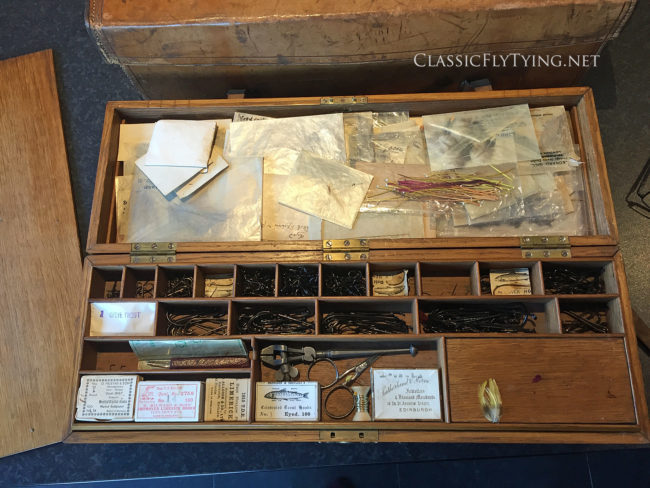
Salmon and Trout hooks in a large variety of sizes, as well as a jeweller’s vice.
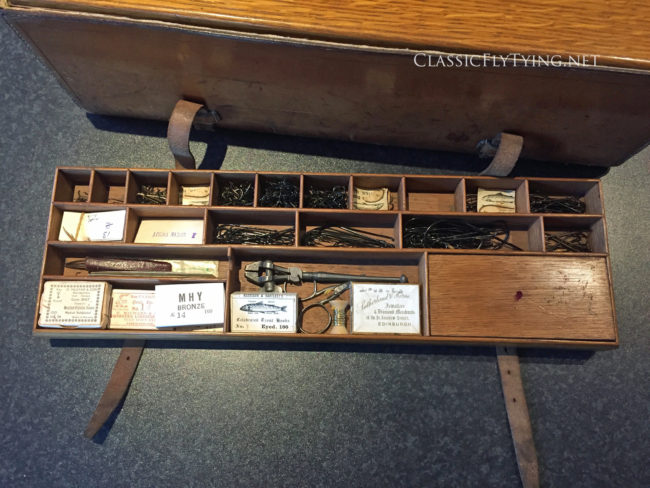
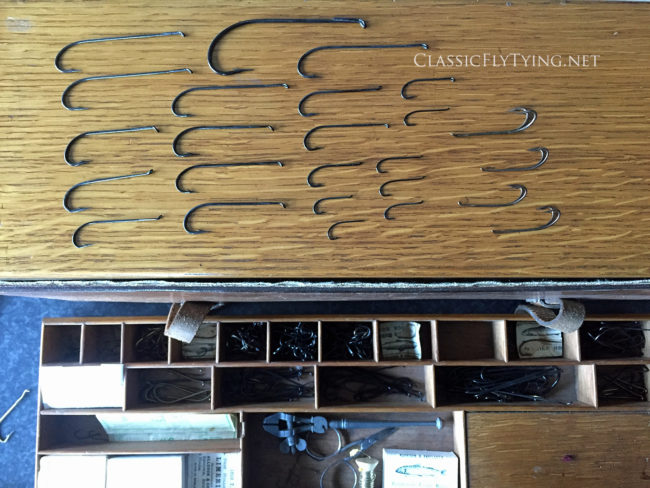
Underneath the hooks and envelopes compartments, there is a gorgeous final tray that contains early Bambridge of Eton compartment boxes, holding salmon fly materials. We know for a fact that Bambridge produced boxes like these in the late Victorian era, as we have seen them come up for sale with the brand marked on them. These boxes are unbranded, and appear to have been part of the original product. They are old, and a perfect fit.
The one thing these boxes provide, is a clear confirmation that this kit has changed ownership many times. A quick look reveals at least 4 different handwritings, and it would seem that the purpose of the kit has shifted from Trout flies originally, to Salmon and Trout flies later in time.
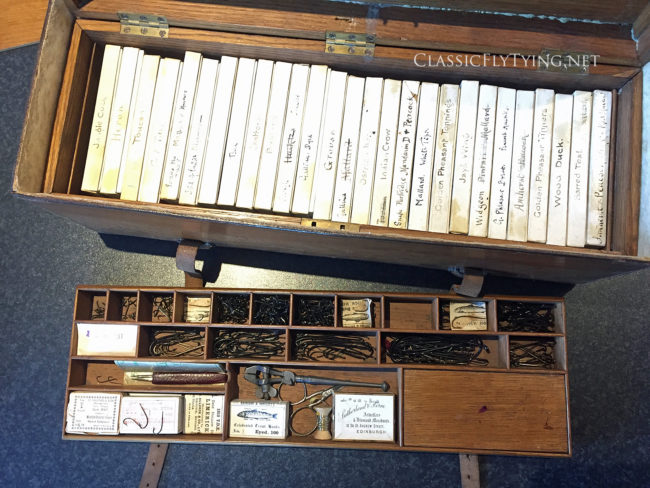
Removing the final tray reveals a dubbing book, made of parchment. This is probably the most interesting item among the contents. First of all, it is a perfect fit, which implies that it was either part of the kit, or sold seperately, but most likely from the same shop, Bambridge.
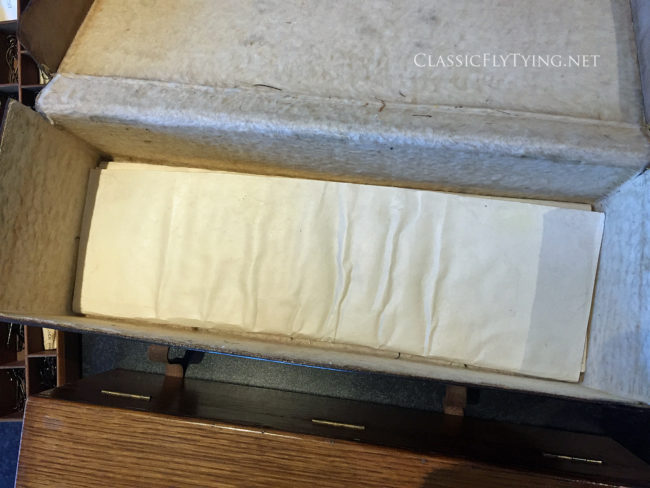
Inside the dubbing book are various notes. First of all, a date confirms that this item was in use before 1891. There are notes about inventory, but also a recipe for a bug repellant that was first published in Forest and Stream in the summer of 1880, and again in ’83, and something about buying Abb-wool and sending it to a prison in Dublin to have socks made. Not much of hint about ownership in that, unfortunately.
These notes look like they could have been Kelson’s, but we have to keep in mind that people of a certain social class were encouraged to write in a similar style. One of the things you typically see in Kelson’s notes, is that he consistently separated his notes with straight lines. In one of Kelson’s hackle books, we do see wavy lines to separate notes on the lower half of the page, which again seems consistent with the notes in the dubbing book, but in all honesty, the wavy lines look to have come from different hands.
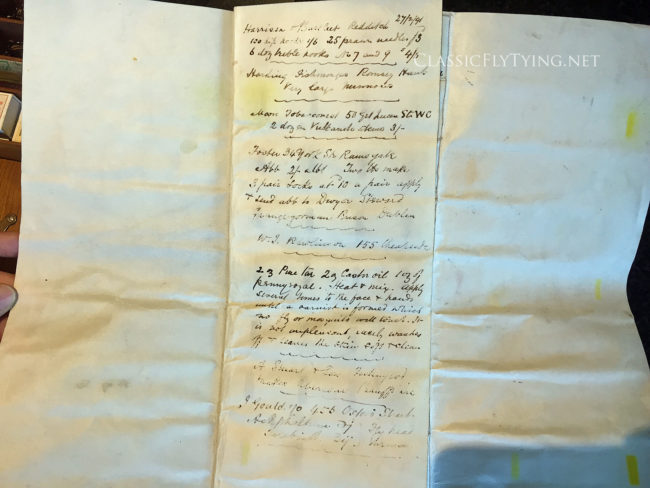
Opening the dubbing book further, we see conclusively that both the book and its content were produced by Bambridge. It has Bambridge script identifying it, which is consistent with other Bambridge products.
Crimson Magenta and Plum Claret are a uniquely part of the Kelson Standard Colours, that the great man was trying to get the industry to accept. He had made its case to promote the effort in the Fishing Gazette many times. His attempt ultimately failed, but it is very significant for us to have an opportunity to see a confirmation of a commercial effort made, even if the product didn’t catch on.
Of course, with an item that is so closely linked to Kelson himself, one might easily expect additional items that honoured his work. However, if we want to detirmine if Kelson himself actually used Bambridge dubbing at some point, we would have to have access to all of Kelson’s personal collection. Unfortunately, most of his personal items reside in private collections, and are unavailable for study, with the exception of the Selina Fane boxes, that are on display at kelsoncollection.com. The latter provide an extensive insight in Kelson’s materials and preferences, but ultimately make up for just a relatively small portion of Kelson’s entire history and stash.
While ownership cannot be conclusively established, these items are very significant at the least. For those among us that like to study Kelson, or simply dress his patterns, this dubbing book provides a rare opportunity to see his work for what it was, and what it looked like.
Ultimately, providing accurate references is the purpose of this website.
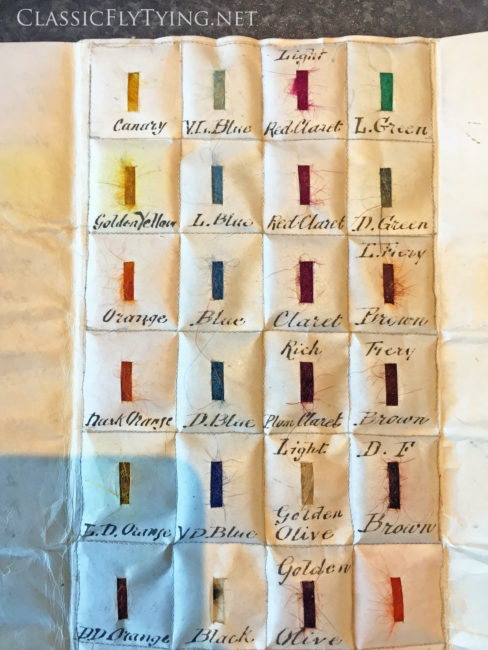
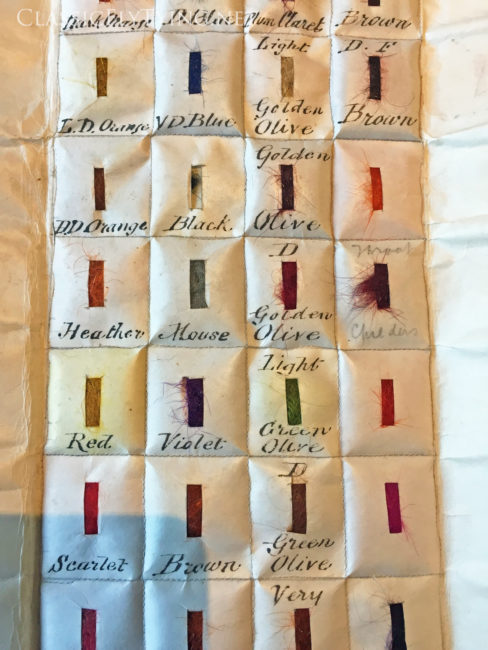
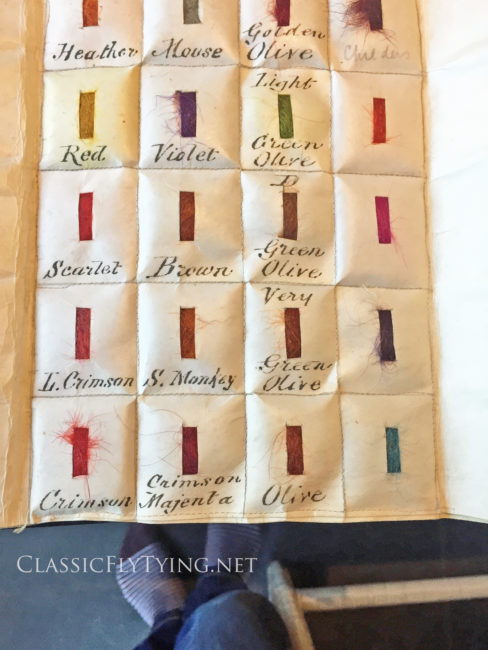
The contents of the cardboard boxes is very relevant indeed. These boxes contain Ariel Toucan, Grey Jungle Fowl, Nankeen Night Heron hackles and Golden Pheasant tail sections.
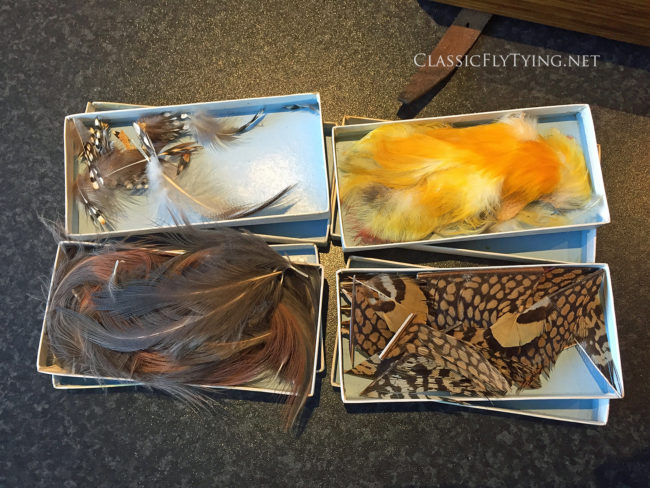
Macaw, Duck, Flame Bowerbird patches, and Chatterer.
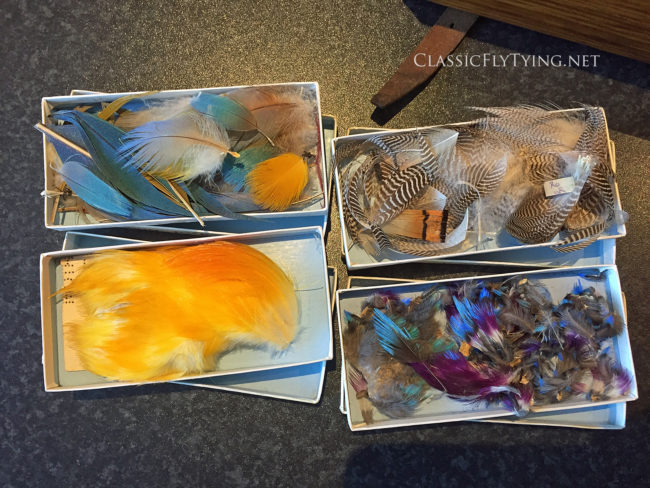
The Flame Bowerbird is labelled “Golden Bird of Paradise”.
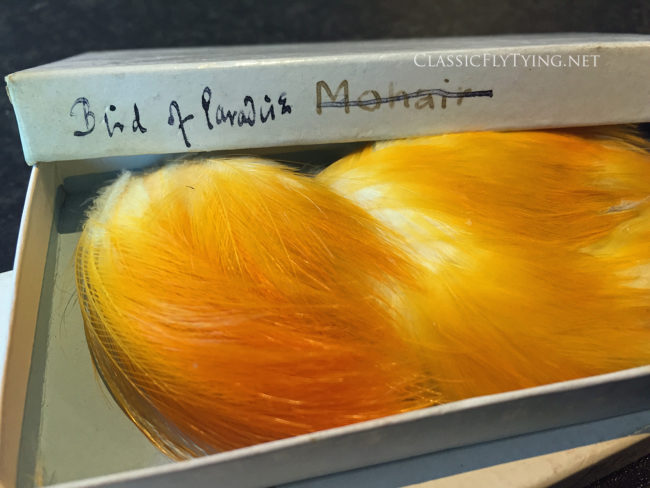
Bustard hackles (notice the light brown colour) in the upper left box.
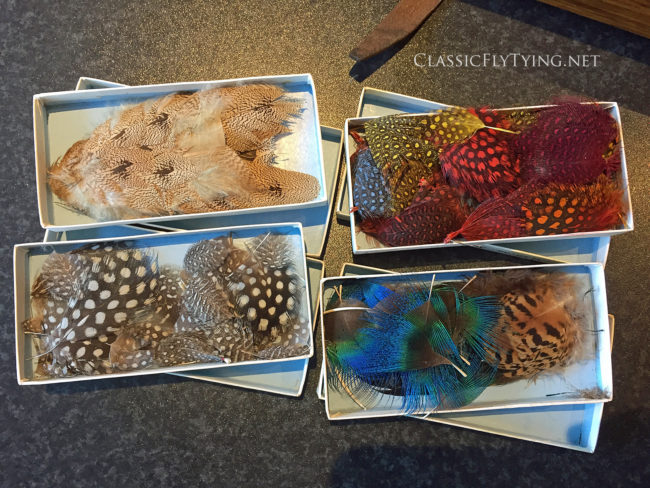
P.S. Granadensis patches, labelled Indian Crow.
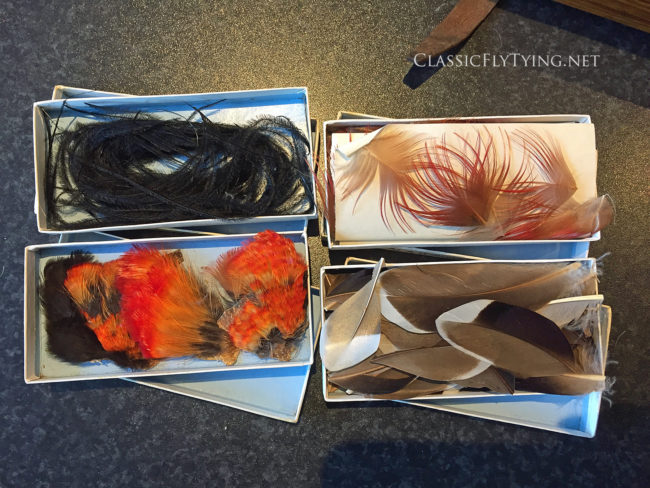
Small toppings in small envelopes inside one of the boxes…
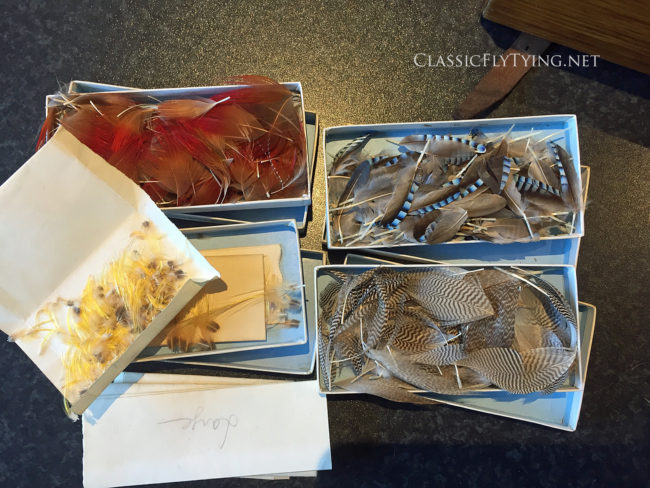
Amgold tail slips on the left upper side, and Great Argus Pheasant hackles on the lower right side.
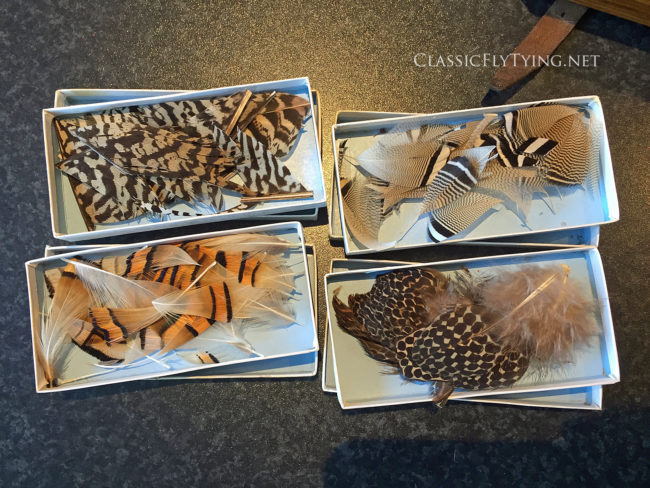
Original Kelson hooks.
